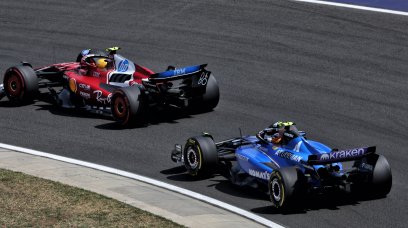Apart from facing the challenges of designing their 2022 cars under Formula 1's 'new era' technical regulations within the constraints of the sport's first budget cap, and simultaneously facing major changes to sporting rules - including a switch to three-day weekend formats, final details of which are to be published shortly – teams face yet another major hurdle: the first 23-race calendar in the 72-year history of the sport. True, last year's championship initially listed 23 rounds, but the sport's masters made clear at the start of the season that the calendar was aspirational and subject to change due to the pandemic. However, this year they are adamant that events will run their full course, with venues having been advised that any drop-offs could result in their contracts being terminated. Building F1 calendars is rather more complex than randomly hurling darts at spreadsheets, then listing races by whatever dates are hit. For starters, certain rounds such as Australia and Abu Dhabi (currently) have contractually agreed dates such as opener or finale - although the former's call on Round 1 was put on hold due to Covid - while Monaco generally booked itself the Ascension Day weekend, as explained here .
Various logistical factors at play
Climatic considerations are another major factor: a Canadian race at Christmas is a no-no, while the searingly hot Middle Eastern temperatures rule out a Bahrain Grand Prix in August. Equally, as images of the Monte Carlo Rally attest, a January race in the principality is absolutely out of the question. Then, logistics come into play for a combination of 'green', practical and financial reasons: although just 0.7% of F1's total emissions are generated on-track, the sport simply cannot be seen to be expending more CO2 than is absolutely necessary to stage a championship season. Time spent in transit - whether air or road - is costly, as are unnecessary air kilometres. Thus, F1 attempts to group events by logical routings. However, too many events in close proximity results in 'cannibalisation' of tickets sales, while spreading events in neighbouring territories across a season makes them more affordable to fans wishing to attend multiple races. That is not always possible - Spa-Francorchamps and Zandvoort are back-to-back - but Imola and Monza are split by six months, while Bahrain's race and that of neighbour Saudi are eight months apart.
Changes to traditional F1 weekend format
There is, though, an imperative for F1 to stage an increasing number of events per year, simply because more races mean more in terms of race hosting fees, more races to package for TV, more exposure for sponsors - trackside and on-car - and more fans are reached globally. Thus, F1 has progressively moved out of Europe, resulting in ever-more complex logistics, cross-border, customs and visa formalities – under reducing cost caps. The tightness of last year's schedule was amply illustrated by the twinned Mexico-Brazil leg: due to inclement weather, elements of F1's air cargo were delayed in Florida, with some teams receiving their containers only on Friday morning. Indeed, concessions were granted by the stewards on a force majeure basis to enable the teams to participate in weekend running. Still, the bad weather could have lasted longer. To provide larger cushions between back-to-backs and, of course, the creeping number of triple-headers, from this year F1 moves from four-day formats to a Friday-Sunday schedule for all events – including for the previous exception, Monaco, which traditionally operated to a five-day programme. Thus, F1 hopes to gain an additional day between back-to-back events. All well and good, but when two or even three continents are crossed, variable weather patterns, industrial action and customs delays can play havoc - and no doubt will, sooner or later – just as the weather eventually caught the sport out in Spa. The more the races are spaced further apart geographically, the greater the risks.
The impact on the budget cap
To contain costs and minimise risks, teams have taken to sending larger items by sea freight in order, with stuff such as garage and hospitality equipment leapfrogging about the globe. For example, one set of kit may go to Bahrain and then to Miami, from whence to Azerbaijan and Sochi, then Japan-Sao Paulo, while another set is shipped Melbourne-Montreal-Singapore-Austin-Abu Dhabi. Or whatever. Asked about the impact of the budget cap on his department, McLaren's Executive Director of Racing, Andrea Stella, said: "In my specific area the main impact is the freight. This is an operational element of going racing that's sometimes not in the spotlight, but actually [it] is a considerable opportunity to generate savings and efficiency. "I really welcomed the push given by the budget cap, because we generated efficiency in the way we ship stuff around the world. We know what we need to go racing, that's one element and I'm really pleased in the way we have been able to generate this efficiency [to benefit performance]." So F1 is pushing for more races and teams are adapting accordingly. There is, though, a constraint to calendar growth: team consent. Under the prevailing Concorde Agreement, the teams need to agree to more than 24 races in a season yet are pushing back at 23 for above-listed reasons, despite the potential revenues generated by more events. That suggests the limit has been reached or even exceeded. As Stella said, F1's logistics usually fly under the radar - and are efficiently handled by global partner DHL - but they present enormous challenges on teams, and increasingly so as the sport's calendar expands. Whereas Grands Prix are races over a set distance, F1's logistics are a race against time.
Most read







